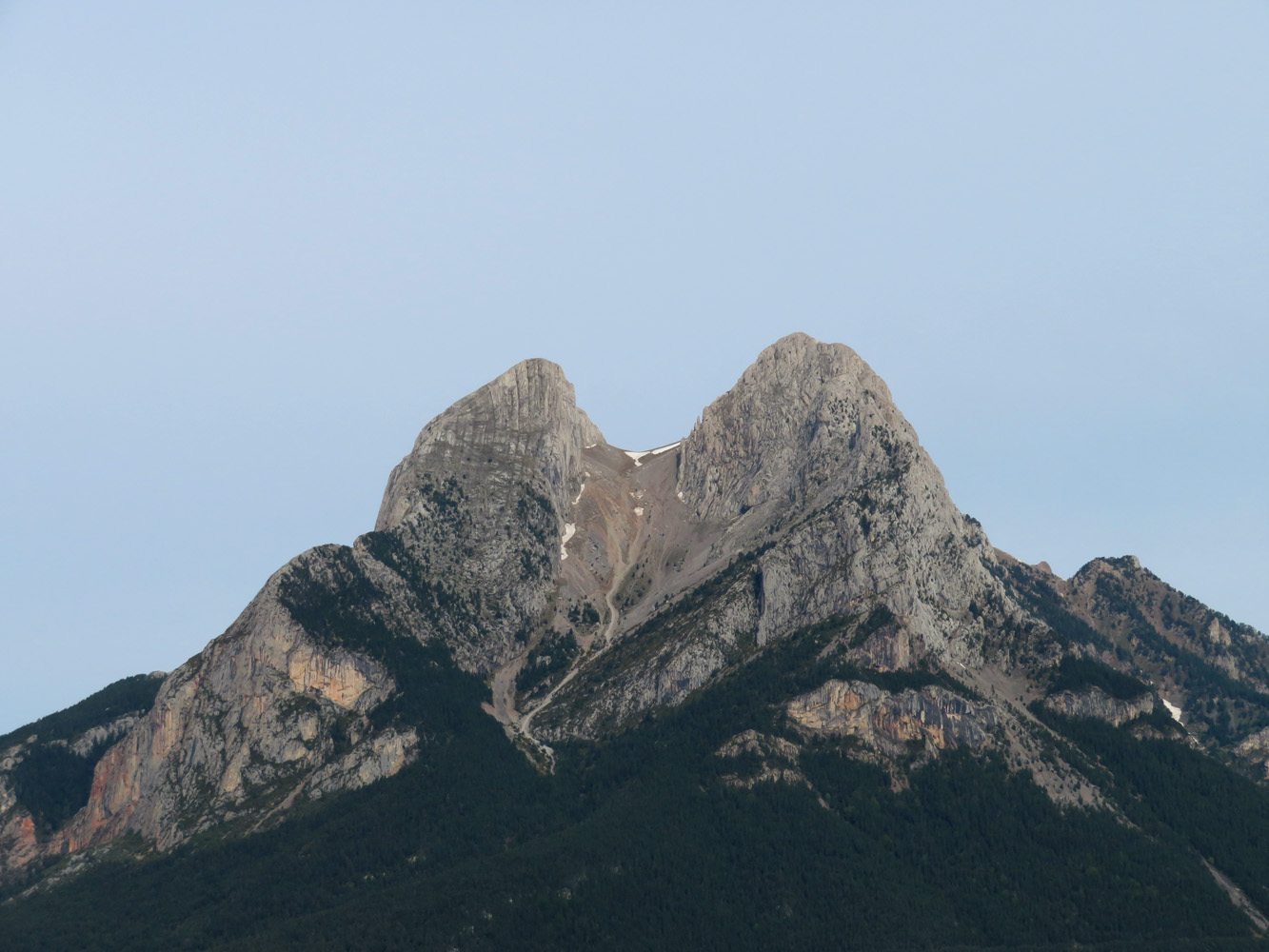
Pyrenees, Catalonia/Spain
2 June 2018
With Wen
Pedraforca is the ultimate scramble in the Pyrenees. This most iconic of Catalan mountains, rivalled perhaps only by Montserrat with its famous monastery, stands out as a single, massive dome whose top is split into two rocky peaks, giving the appearance of a pitchfork (Pedraforca means “rock fork”). From a distance, the sight of the mountain is truly breathtaking, and just the approach by car alone is worth the journey.
There are several ways to ascend the main summit, also called Pollegó Superior, and the route we took is by far the most popular one. The second peak, Pollegó Inferior, and a subsidiary summit called El Calderer are both slightly lower but can also be climbed. I was told Pollegó Inferior was a much more challenging scramble than the main summit.
The parking lot at the Mirador (lookout) Gressolet at the end of the paved road from the village of Saldes was already full when we arrived at the lazy hour of 10 am, so we had to join the many other cars at the curb of the road. The classic route up Pedraforca basically follows a counter-clockwise loop, first traversing the forested north side of the mountain towards the west, where the trail steeply rises above treeline towards a small saddle near Cap del Verdet. From here, it’s almost all continuous scrambling on a faint rocky trail over several bumps to the main summit. The descent is on a long talus slope that has formed between the two tines of the pitchfork, then the trail veers north to rejoin the ascent route at the Lluís Estasen refuge (which serves snacks and cold drinks!).
After days of rainy weather, we finally caught some sunny and warm weather today. Right off the start we ran in to dozens of people, some stumbling back from the refuge in a slightly inebriated state, some setting out for a nice family day hike on one of the many trails around the mountain, but most to scramble to the very summit of Pedraforca. The hike through the forest at the beginning was pretty easy and actually a good warm-up for the scramble part. A steep grunt just before the saddle at Cap del Verdet left us breathless, but the fabulous views from the col down the south side of the mountain were a great reward.
We counted about 10 other people at the col, all heading towards the summit ridge, but that number soon tripled as we approached the first crux, a bottleneck and probably the most challenging section of the scramble. It’s basically a steep, rocky chute with a 5 m rope in place in the trickiest section. The rock is pretty solid with lots of good holds, so the rope isn’t really necessary if you have some experience with difficult scrambles, but we saw lots of people who did find it helpful. Most people were going up, while a few were slowly making their way down, creating a bit of a traffic jam. With so many people clambering about there’s always a risk of rock fall and both Wen and I really regretted not bringing our helmets… Once past the first crux, we came across a group of young guys with a girl crying in their midst. She was shaking and looked pale as an egg, the steep rock and exposure had simply been too much for her.
Everyone and their dog was out and about on Pedraforca today. There were literally hordes of people forming long chains of little ants that you could see across each bump snaking their way up the next. And there was even a dog in one group! We, of course, merrily joined the crowds, mindful that all these hands and boots – including our own – would inevitably loosen up some rocks that could do significant damage to our heads. We were really surprised to see that only a single person was wearing a helmet in this terrain (a client led by a mountain guide), but then again we were just as guilty. In one particularly steep section a guy above us got slightly off route and knocked down a shower of pebbles on us and everyone else below, prompting frantic screams of PEDRA! PEDRA!. A girl just below me got hit in the head by a small stone, but thankfully didn’t get hurt.
At the summit, the atmosphere almost felt like a big party! One guy lit up his victory cigar, while others rolled out a big fat Catalan flag for summit pictures. Everyone was full of smiles. The views were of course fantastic, although thick clouds were moving in fast from the north. Across the gap we could see a few people on the second peak, which is apparently a difficult climber’s scramble.
We were happy with our accomplishment and decided to head down. A slight drizzle temporarily slowed all traffic considerably as the rock turned wet and slippery, but even then there were still people heading up from the valley below on the normal descent route. Probably some crazy rock climbers! The talus slope had some decent scree in the upper part for a quick slide down, but in the lower section it got too chunky for our taste and we joined the proper trail again. A short hike through the forest brought us back to the refuge where we rejoined our ascent trail.
Pedraforca is undoubtedly a top scramble and a must-do in Catalonia. It was one of our favourite outings during the whole journey, despite the crowds we encountered. For a quieter and safer trip, chose a weekday to do this or simply start very early before everyone else heads up. And definitely bring a helmet!

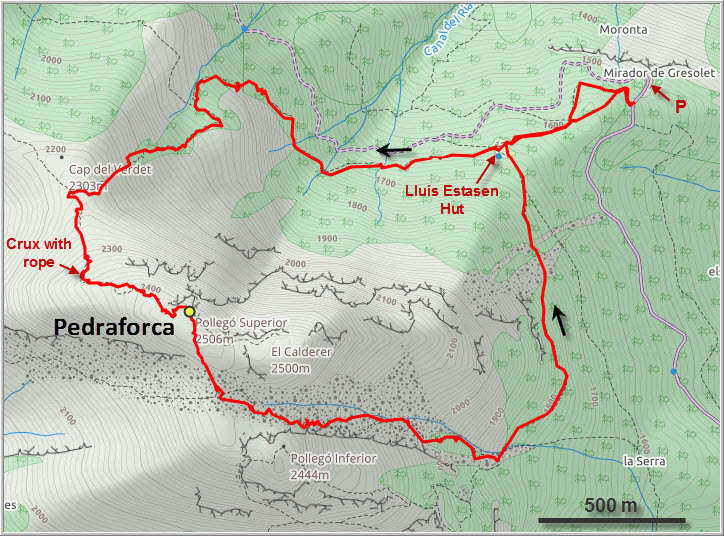
DISCLAIMER: Use at your own risk for general guidance only! Do not follow this GPX track blindly but use your own judgement in assessing terrain and choosing the safest route.
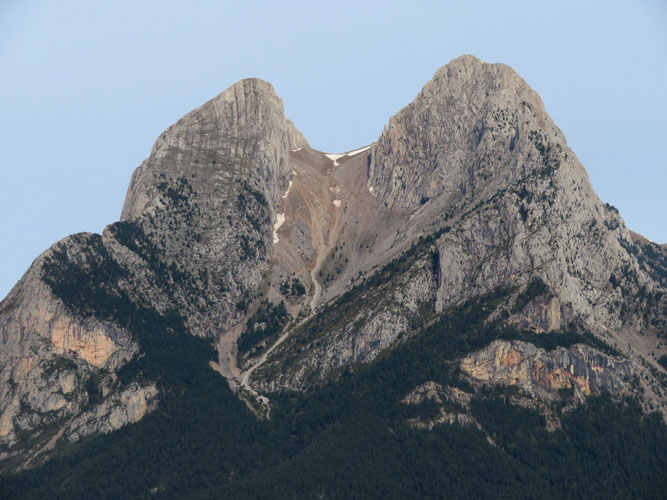
The iconic Pedraforca as seen from the east, with its distinctive gap between two rocky cones. Pollegó Superior (R) is the main summit, Pollegó Inferior (L) is slightly lower. The descent route goes down the scree gully in the middle, then veers right through the forest.
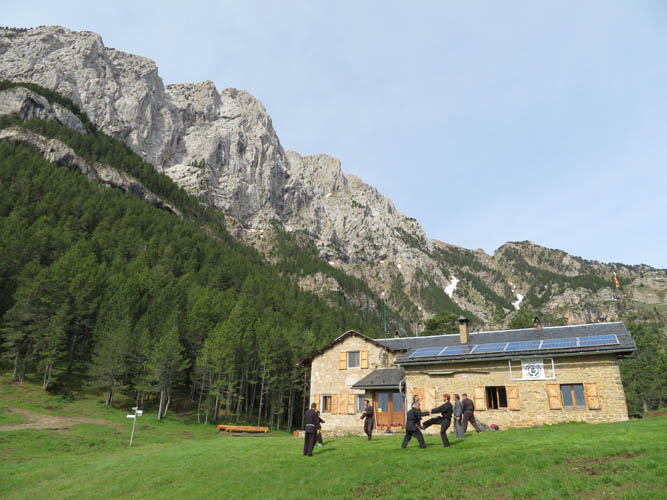
Lluis Estasen refuge near the start of the route, complete with ninjutsu club.
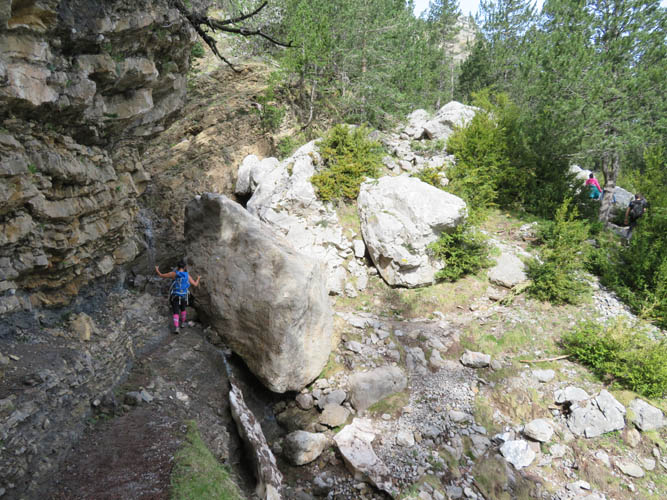
Some huge boulders have come down the steep north side of the mountain, but they’re easily bypassed.
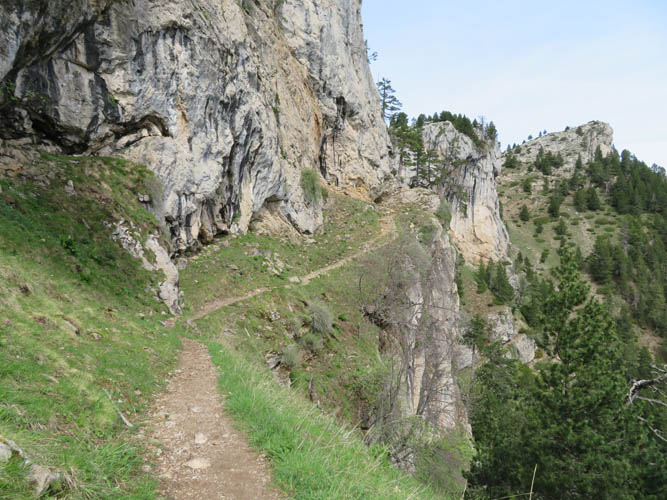
Pleasant hiking on the approach.
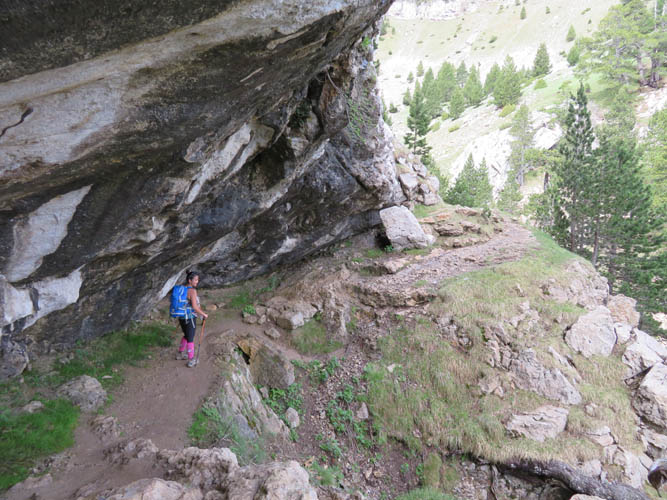
A nice rock roof on the way up.
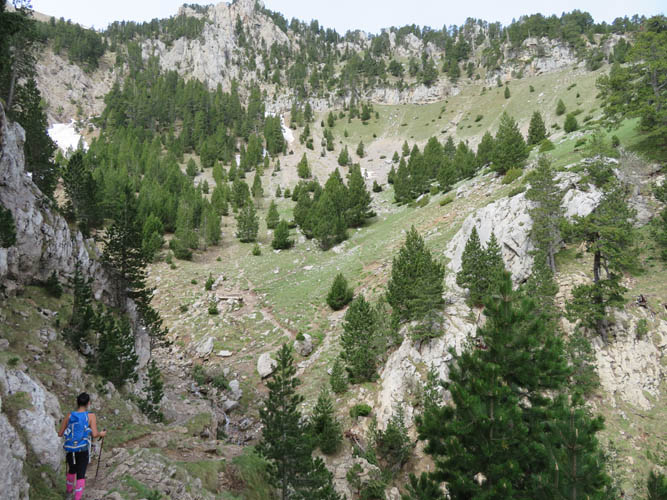
Around this corner, the steep grunt to the saddle begins.
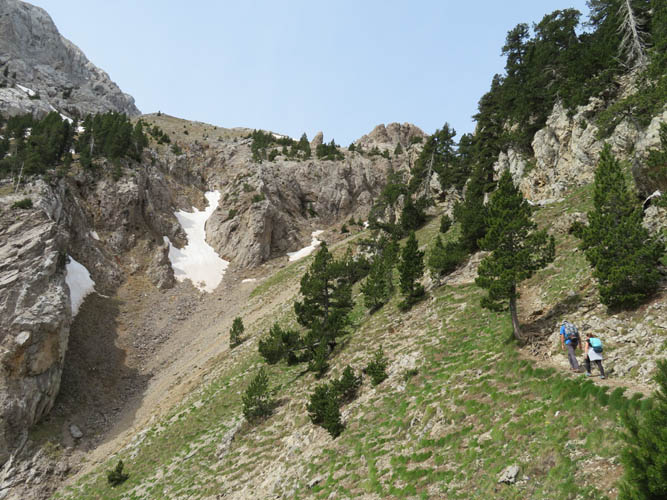
Lots of people are out enjoying this sunny Saturday!
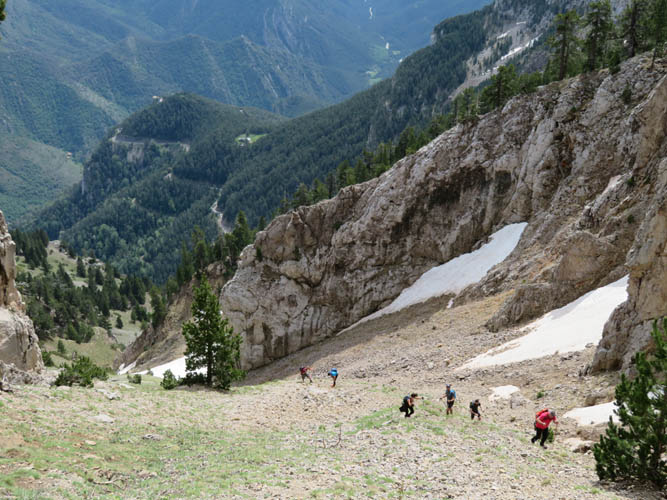
Looking back along the trail from near the saddle.
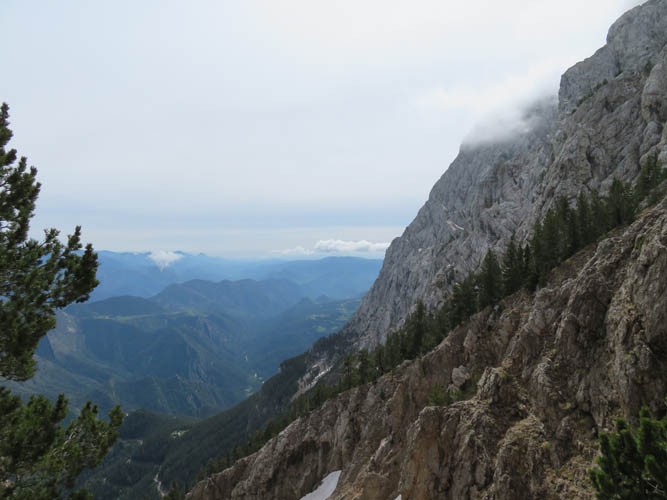
The north side of the mountain is mostly steep and rocky.
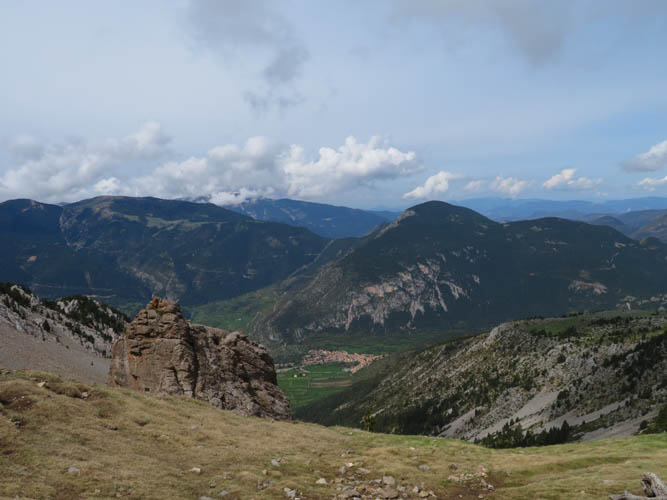
At the saddle near Cap del Verdet, looking south.
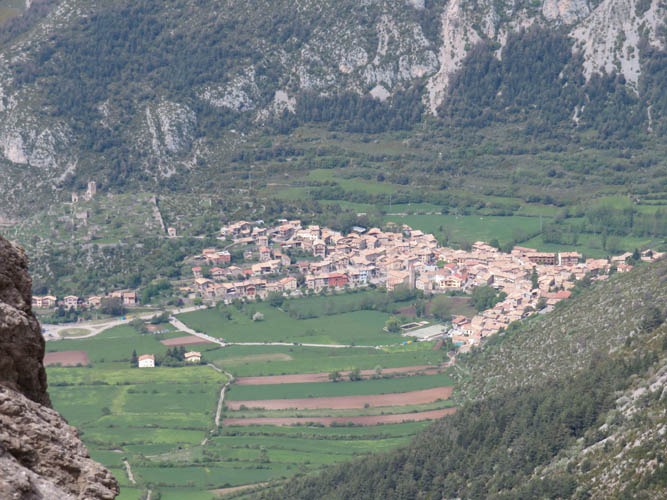
The small town of Gósol. An alternative route up the mountain starts here.
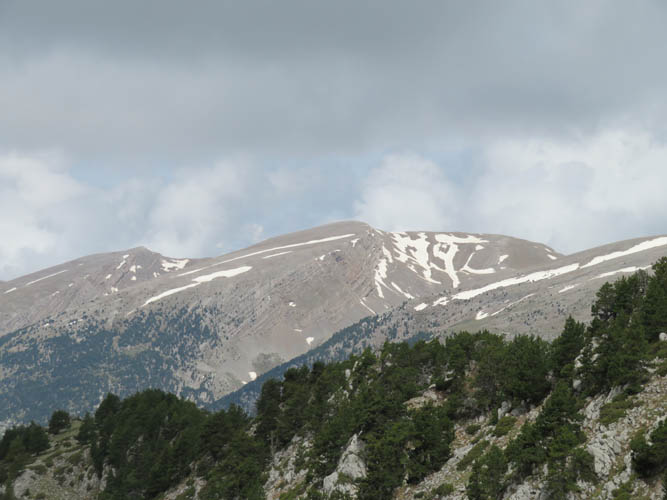
A long E-W ridge with gentle south slopes and steep cliffs on the north side can be seen in the distance. I think the high point in the middle is a peak called Vulturó.
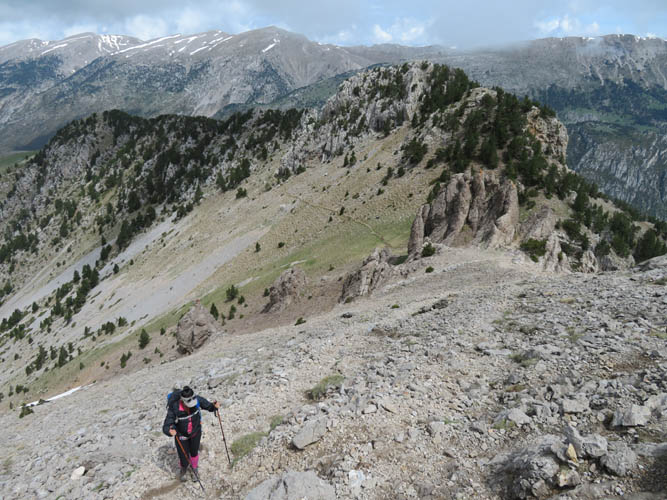
Leaving the main trail at the saddle behind, we approach the start of the long scrambling section.
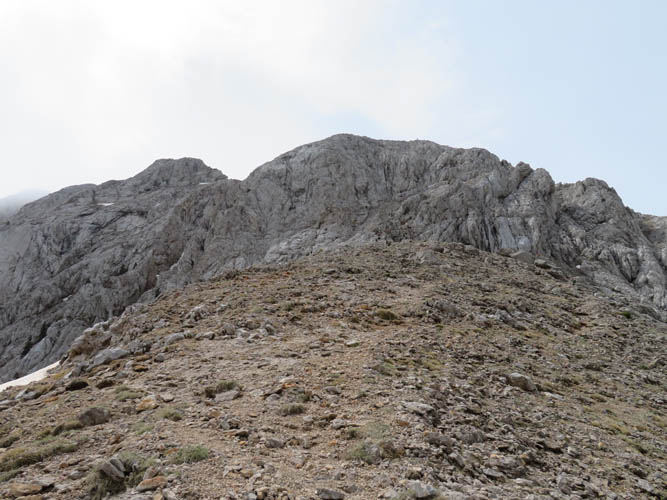
Steep limestone cliffs loom ahead and we can already see lots of tiny figures slowly moving along the route.
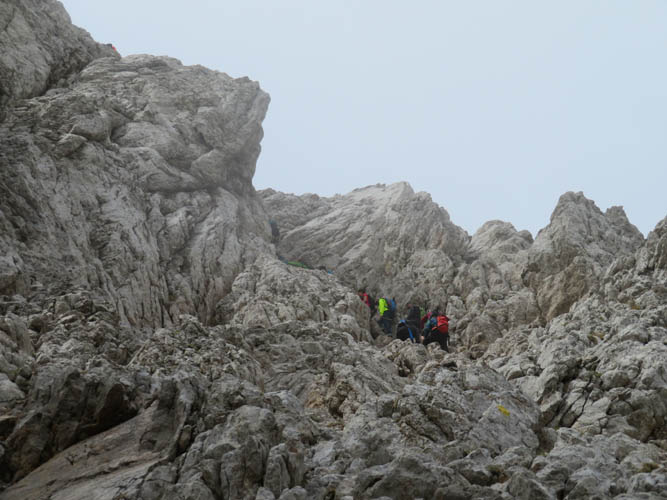
One of the bigger groups ahead of us is forming a line-up at the crux; one other person was also descending here at the same time.
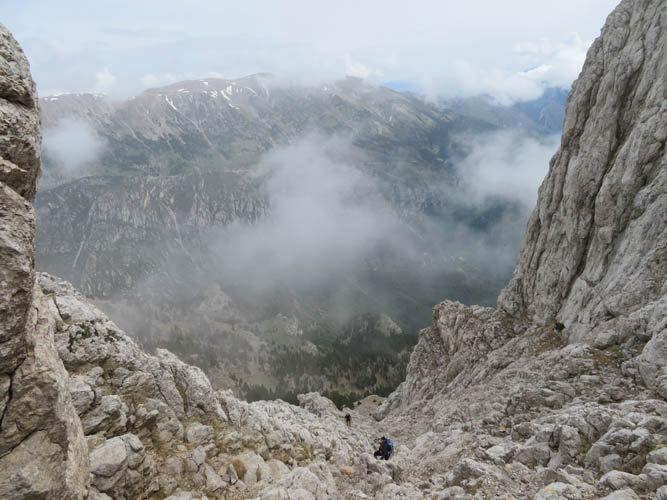
Wen coming up from the clouds.
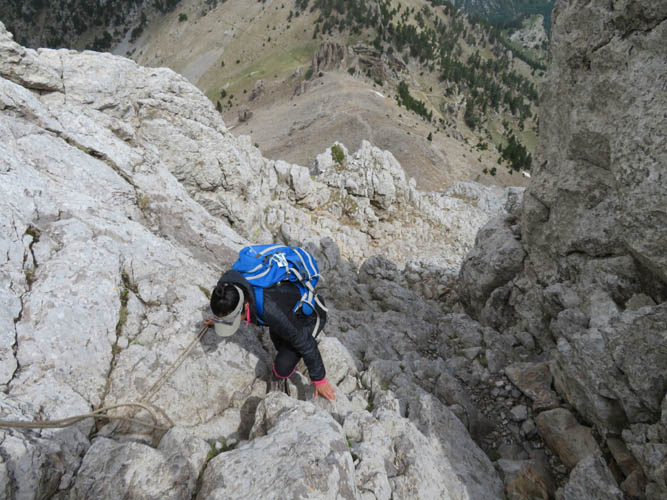
The crux complete with rope – it looks more difficult than it is. One can also scramble up in the narrow gully on the far right of the photo.
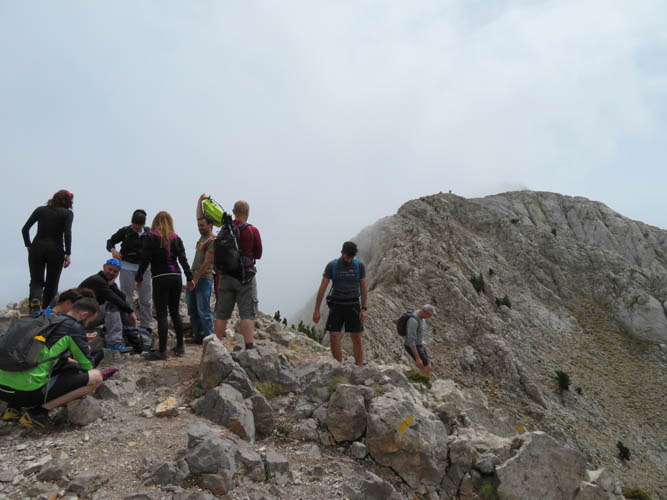
The top of the first bump just above the crux is a popular rest stop!
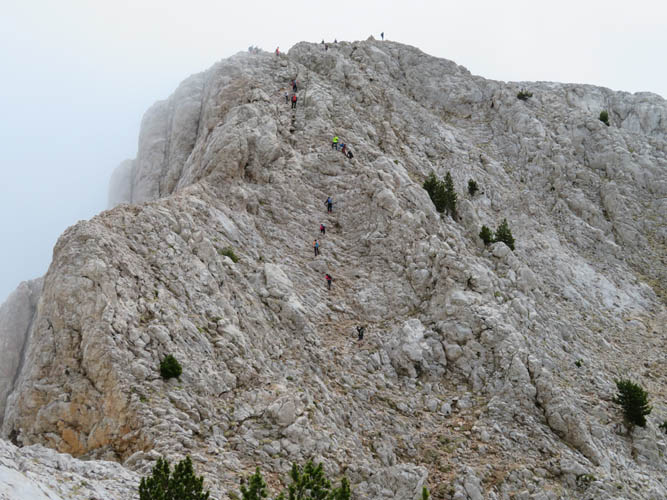
Tons of people can be seen slowly making their way up the next bump. This is a hugely popular mountain on summer weekends!
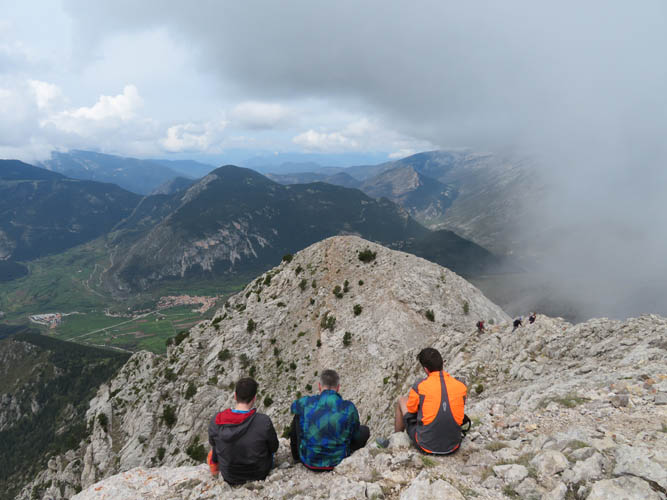
This is what we come here for!
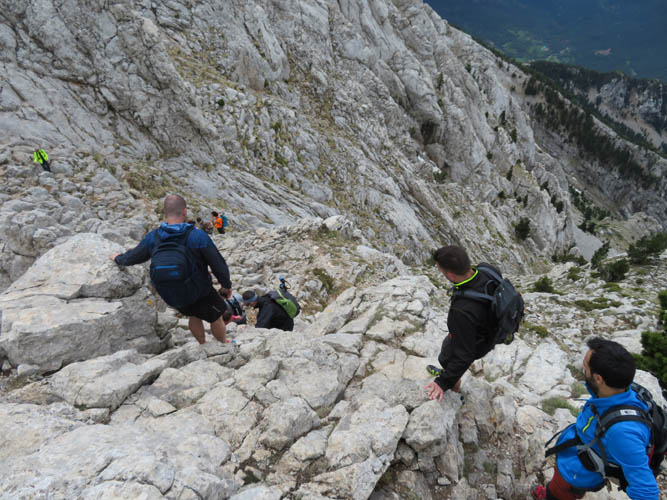
One of the more challenging downclimbs along the ridge.
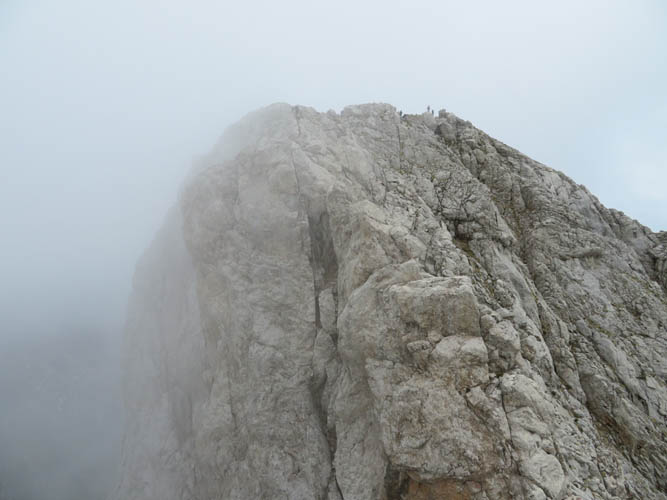
Fast-moving clouds often move in from the north – and they typically vanish as quickly as they appeared.
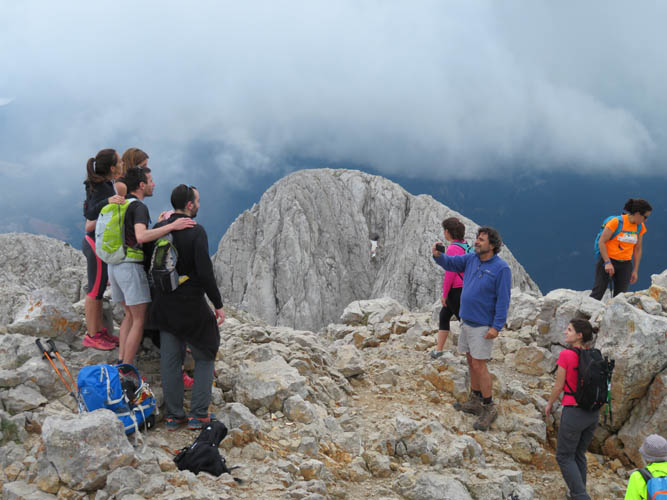
Summit shots! Pollegó Inferior, the second peak, can be seen in the background.
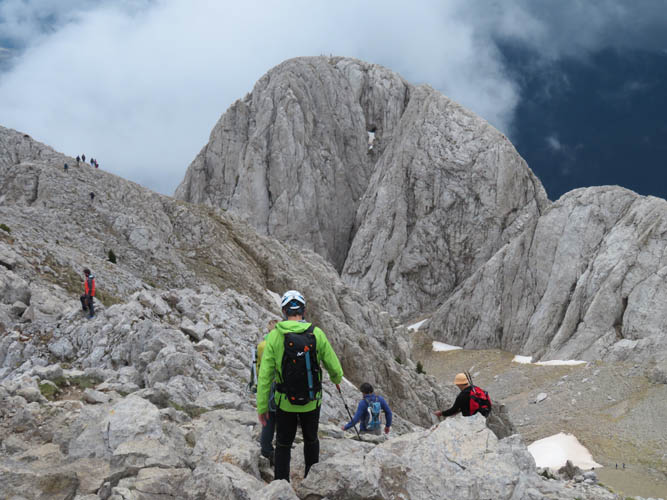
Heading down to the col between the two peaks.

Thankfully there wasn’t a lot of snow left up here. In winter or even spring, when snow still persists, this mountain would not be a scramble anymore, but a mountaineering objective.
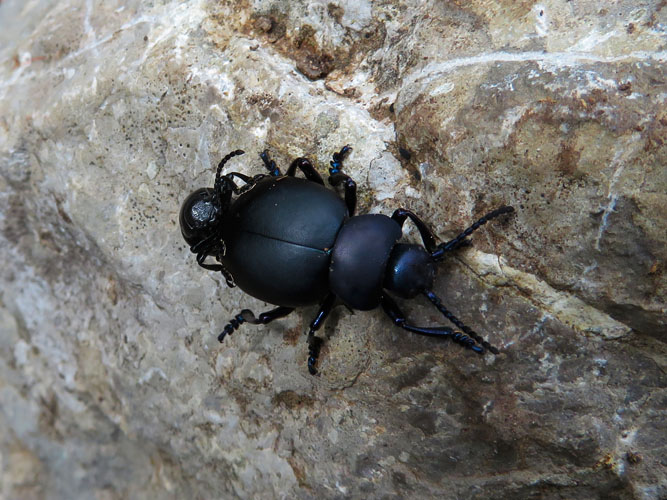
Interesting beetles we found in the talus field on the way down.
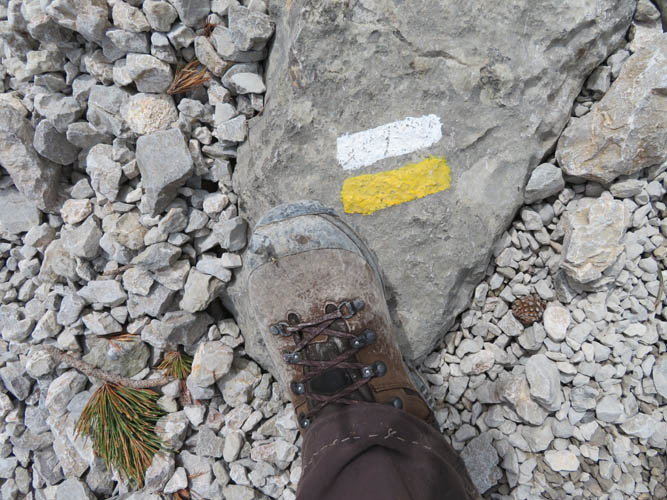
The price of “scree-skiing” fun is worn, dirty boots and not always worth it. The rocks here are too sharp and chunky, nothing like Grade-A Yamnuska scree!
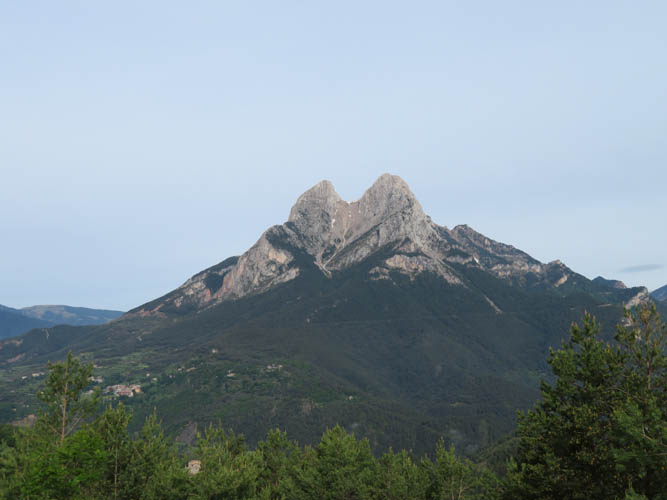
One last look at Pedraforca as we drive away…